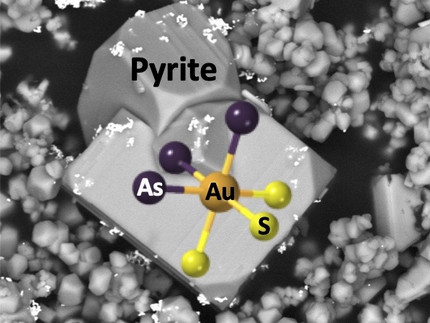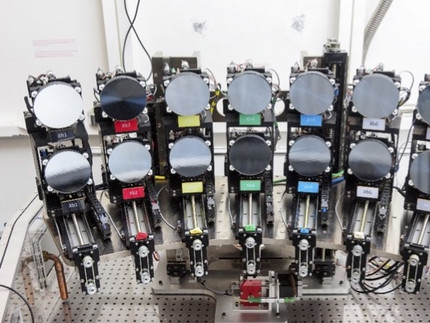A mineral pump for gold in the Earth’s crust
To form an ore deposit, gold needs to be concentrated from a thousand up to a million times more than its average abundance in the Earth's crust (which is only about 1 mg per ton of rock). In nature, only very few minerals, namely the sulfides arsenian pyrite and arsenopyrite, are known to present such enrichment factors for gold. However, despite the enormous implications for ore deposits, the state of this ‘invisible' gold and the cause of its entrapment in these sulfides remain one of the greatest mysteries in the history of the study of ore deposits. An international interdisciplinary consortium of scientists was able to elucidate this mystery. They have shown the exact nature of this invisible gold incorporated by these minerals and revealed the fundamental mechanism that drives these ‘mineral pumps’ at the atomic-scale. By combining high-resolution experiments – carried out at the European Synchrotron facility (ESRF) – and physical-chemical modeling, the team has discovered that gold enters these minerals with a formal oxidation state of +2. This is made possible by the occurrence of a redox reaction between the fluid and mineral that allows binding gold to arsenic, leading to the formation of the atomic cluster AuAsnS6-n in the mineral structure (Image). This universal gold-arsenic coupling mechanism explains how these iron sulfides can massively capture gold and release it later, controlling both concentration and distribution of gold in different types of hydrothermal deposits. This novel conceptual model opens perspectives for finding new sources of gold and other precious and critical metals hidden in iron sulfide minerals, and for improving the processing and recycling of metal ores for our ‘metal-hungry’ society.
Find out more:
G.S. Pokrovski, C. Escoda, M. Blanchard, D. Testemale, J-L. Hazemann, S. Gouy, M.A. Kokh, M-C. Boiron, F. de Parseval, T. Aigouy, L. Menjot, P. de Parseval, O. Proux, M. Rovezzi, D. Béziat, S. Salvi, K. Kouzmanov, T. Bartsch, R. Pöttgen, T. Doert (2021) An arsenic-driven pump for invisible gold in hydrothermal systems.Geochemical Perspectives Letters (2021) 17, 39-44 | doi: 10.7185/geochemlet.2113.
Contact:
Maria Kokh
University of Potsdam
Institute of Geosciences
kokh@uni-potsdam.de
Tel.: +49 331 977 5876
Image caption: Representation of atomic clusters formed by gold, arsenic and sulfur in arsenian pyrite (shown in the background as imaged using Scanning Electron Microscopy; upper panel, not to scale). The existence of these clusters was revealed by this study using a high-resolution X-ray absorption spectroscopy device installed on the FAME-UHD beamline of the European Synchrotron Radiation Facility, ESRF (lower panel).


